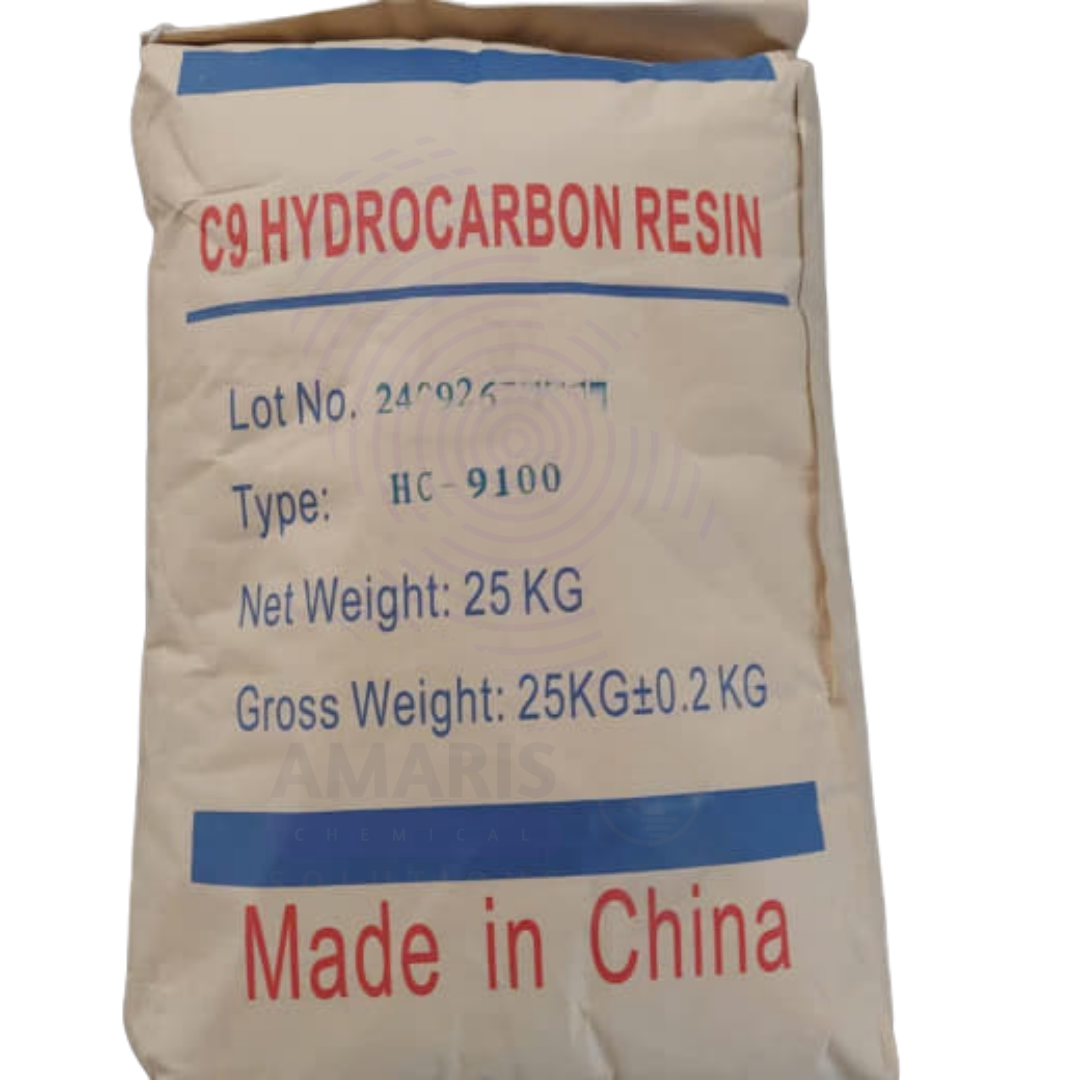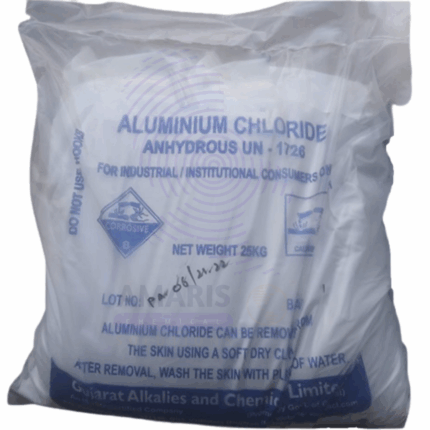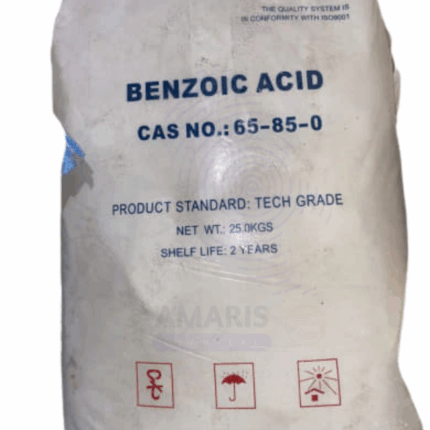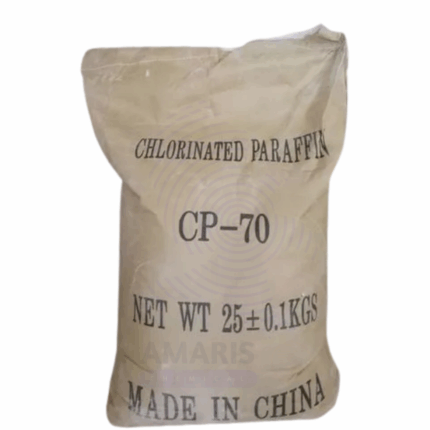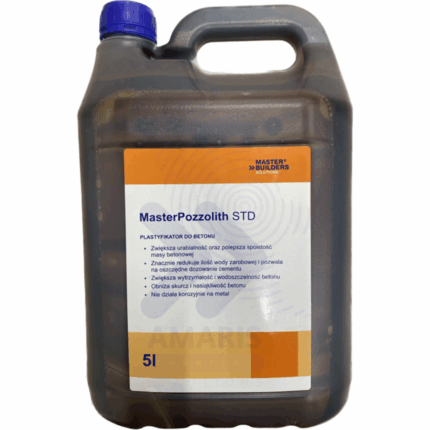Back to products
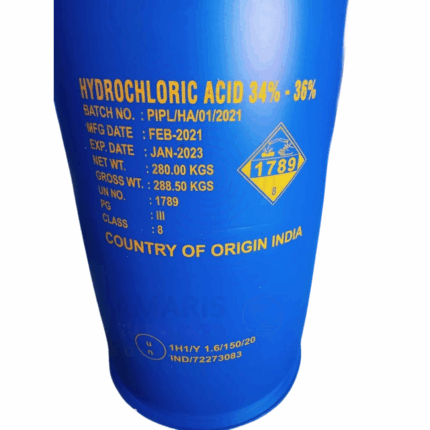

Hydrochloric Acid HCL 270 kg Drum
$ 1.00 Original price was: $ 1.00.$ 0.86Current price is: $ 0.86.
Hydrocarbon Resins C5 And C9 Petroleum Resins
Whatsapp Order
Hydrocarbon Resins C5 And C9 Petroleum Resins are synthetic petroleum-derived resins produced through the polymerization of C5 (pentene) and C9 (nonene) fraction monomers. These resins appear as pale yellow to amber solid materials, usually in pellet or flake form, characterized by tackifying and adhesive properties. C5 resins are derived from aliphatic hydrocarbons, while C9 resins originate from aromatic hydrocarbons. Often blended, these resins provide a balance of hardness, tackiness, and compatibility with various polymers. Widely used as tackifiers, binders, and modifiers, C5 & C9 hydrocarbon resins enhance performance in adhesives, coatings, rubber compounding, and more.
Categories: Additives, Binders/Resins, Catalysts, Lubricants
Tags: Aromatic Hydrocarbon Resin, C5/C9 Petroleum Resins, Paints & Coatings, Petroleum Resin
Description
Table of Contents
Toggle
Hydrocarbon Resins C5 And C9 Petroleum Resins
Primary Uses
- Adhesives Industry
- Act as tackifiers and binding agents in pressure-sensitive adhesives (PSAs) such as tapes, labels, and sticky notes.
- Improve adhesion strength and bonding performance in hot melt adhesives (HMAs) used in packaging, bookbinding, woodworking, and footwear.
- Serve as compatibility enhancers between polymers and tackifiers in solvent-based and water-based adhesive formulations.
- Rubber and Tire Industry
- Function as softening and reinforcing agents in rubber compounding to enhance processing, tack, and grip of tires and conveyor belts.
- Improve low-temperature flexibility and abrasion resistance of rubber products.
- Paints and Coatings
- Used as modifiers to enhance gloss, hardness, and adhesion in industrial and automotive coatings.
- Improve flow and leveling characteristics in paints and varnishes.
- Printing Inks
- Serve as resins in printing inks to improve adhesion, gloss, and drying properties.
- Sealants and Caulks
- Provide tack and binding properties in sealants and caulks used in construction and automotive sealing applications.
- Plastic and Polymer Industry
- Employed as modifiers in plastic compounding to enhance impact strength and processability of polymers such as polystyrene and polyethylene.
Secondary Uses
- Rubberized Asphalt
- Added to asphalt formulations to improve flexibility, adhesion, and durability of roofing and road materials.
- Hot Melt Road Marking Paints
- Used as film formers and tackifiers in road marking paints for improved durability and weather resistance.
- Cosmetics and Personal Care
- Occasionally used in specialty cosmetic adhesives (e.g., eyelash glue) for tack and durability.
KEY ATTRIBUTES
- Basic Identification Attributes
- Chemical Base: Petroleum-derived hydrocarbon polymers (C5 and C9 fractions)
- Common/Trade Name: Hydrocarbon Resins C5 & C9
- CAS Number: Mixtures (varies by resin type, typically proprietary blends)
- HS Code: 3905.90.00
- Molecular Formula: Complex mixture of C5 and C9 hydrocarbons polymerized
- Synonyms: C5 Resin, C9 Resin, Petroleum Hydrocarbon Resin, Tackifying Resin
- Physical & Chemical Properties
- Physical State: Solid (pellets, flakes, or powder)
- Color & Odor: Pale yellow to amber; mild petroleum odor
- Softening Point: Typically 90–120°C (Ring & Ball method)
- Density: Approx. 1.0–1.1 g/cm³
- Solubility: Soluble in aromatic and aliphatic solvents; insoluble in water
- Compatibility: Compatible with various polymers like natural rubber, styrene-butadiene rubber, ethylene-vinyl acetate, and others
- Safety & Hazard Attributes
- GHS Classification: Not classified as hazardous; combustible solid
- Toxicity: Low toxicity; no significant acute toxicity reported
- Exposure Limits: No specific occupational exposure limits established; avoid dust inhalation
- Storage & Handling Attributes
- Container Type: Sealed polyethylene bags or drums
- Storage Conditions: Store in cool, dry, well-ventilated area away from heat and ignition sources
- Shelf Life: 12–24 months under recommended conditions
- Handling Notes: Avoid dust generation; use proper PPE to prevent inhalation
- Regulatory & Compliance Attributes
- Complies with regulatory standards for industrial and commercial use
- Not intended for food contact unless specified by manufacturer
- REACH registered in applicable jurisdictions
- Environmental & Health Impact
- Biodegradability: Poorly biodegradable due to synthetic hydrocarbon nature
- Ecotoxicity: Low aquatic toxicity but avoid environmental release
- Bioaccumulation: Not expected to bioaccumulate
- Carcinogenicity/Mutagenicity: No evidence of carcinogenic or mutagenic effects
SAFETY HANDLING PRECAUTIONS
- Safety Handling Precautions
- PPE Required: Dust mask or respirator, gloves, safety goggles
- Handling Guidelines: Use in well-ventilated areas; minimize dust exposure
- Hygiene Practices: Wash hands after handling; avoid ingestion and inhalation
- First Aid Measures
- Inhalation: Move to fresh air; seek medical attention if symptoms persist
- Skin Contact: Wash with soap and water; seek medical advice if irritation occurs
- Eye Contact: Rinse with plenty of water for 15 minutes; consult physician if irritation persists
- Ingestion: Rinse mouth; seek medical advice if large amounts ingested
- Firefighting Measures
- Fire Hazards: Combustible solid; dust may form explosive mixtures with air
- Extinguishing Media: Use foam, dry chemical, or CO₂; avoid water jets on burning material
- Special Precautions: Wear protective equipment; prevent dust dispersion
- Combustion Products: Carbon monoxide, carbon dioxide, and hydrocarbons
Related products
Anhydrous Aluminum Chloride
Anhydrous Aluminum Chloride (AlCl₃) is a white to pale yellow crystalline solid known for its strong Lewis acid properties. It is a key catalyst widely used in organic synthesis, especially in Friedel-Crafts alkylation and acylation reactions. Due to its high reactivity with moisture, it must be stored and handled under strictly anhydrous conditions. Anhydrous Aluminum Chloride also finds applications in polymerization, pharmaceuticals, and the production of dyes, pharmaceuticals, and petrochemicals.
Benzoic Acid
Benzoic Acid is a white crystalline solid with a faint, pleasant odor, classified as a simple aromatic carboxylic acid. It is widely used as a food preservative, antimicrobial agent, and chemical intermediate. Naturally occurring in many plants, it is commercially produced through oxidation of toluene or extraction from natural sources. Benzoic acid is valued for its ability to inhibit the growth of mold, yeast, and certain bacteria, making it essential in food preservation and cosmetic formulations. It also serves as a precursor in the manufacture of various pharmaceuticals, dyes, and plasticizers.
BxPB Paint Drier (Lead Replacement)
BxPB Paint Drier is a specialized industrial additive designed as a non-toxic, lead-free alternative to traditional lead-based paint driers. It contains 36% active metal content primarily composed of bismuth and other metals, formulated to accelerate the drying and curing process of oil-based paints, varnishes, and coatings. The product improves film formation, reduces drying times, and enhances the durability and gloss of finished surfaces without the health and environmental hazards associated with lead compounds. BxPB36% Paint Drier is commonly used in architectural, industrial, and automotive coatings as a safer substitute for lead-based driers.
Chlorinated Paraffin Wax
Chlorinated Paraffin Wax is a synthetic chlorinated hydrocarbon obtained by the chlorination of paraffin wax. It typically appears as a waxy solid, ranging from light yellow to dark brown depending on the degree of chlorination and the chain length of the paraffins. CPW is valued for its excellent flame retardant, plasticizing, and extreme pressure (EP) additive properties. It is widely used in industrial applications including metalworking fluids, PVC formulations, rubber compounding, and flame retardant materials. CPW offers thermal stability, chemical resistance, and lubricating qualities, making it a versatile industrial additive.
Dicumyl Peroxide
Dicumyl Peroxide (DCP) is a widely used organic peroxide with powerful free radical initiator properties. It appears as a white crystalline solid with a characteristic odor and is primarily employed as a cross-linking agent and polymerization initiator in the plastics and rubber industries. Due to its ability to generate free radicals upon thermal decomposition, it facilitates curing and cross-linking of polymers, improving mechanical properties and heat resistance. Dicumyl Peroxide is a key component in manufacturing processes for polyethylene, polypropylene, EPDM rubber, and other elastomers.
Master Pozzolith
Master Pozzolith is a high-performance concrete admixture designed to improve the workability, strength, and durability of concrete. It acts as a water-reducing agent and plasticizer, enabling reduced water content while maintaining slump and flow characteristics. This results in enhanced compressive strength, reduced permeability, and improved resistance to weathering and chemical attack. Master Pozzolith is widely used in ready-mix concrete, precast elements, and structural applications to optimize concrete performance and longevity.
Oleic Acid 75%
Product Description
Oleic Acid 75% is a naturally occurring monounsaturated fatty acid commonly derived from vegetable oils such as olive, sunflower, and canola oils. This oily liquid is widely used in the chemical, pharmaceutical, cosmetic, and food industries due to its excellent emollient, surfactant, and stabilizing properties. Oleic Acid 75% is a key raw material in manufacturing soaps, detergents, lubricants, and personal care products. Its amphiphilic nature makes it an effective emulsifier and penetration enhancer.Sasol Phenol
Sasol Phenol is a high-purity, industrial-grade phenol produced by Sasol, widely used as a key raw material in the manufacture of plastics, resins, and chemicals. Phenol is an aromatic organic compound characterized by a hydroxyl group (-OH) attached to a benzene ring. It serves as a precursor in producing bisphenol A, caprolactam, and phenolic resins. Sasol Phenol is known for its consistent quality, purity, and suitability for diverse industrial applications including chemical synthesis, pharmaceuticals, and adhesives.


 Preservatives(food)
Preservatives(food) Flavor Enhancers
Flavor Enhancers Acidulants
Acidulants Sweeteners
Sweeteners Antioxidants
Antioxidants Colorants(food)
Colorants(food) Nutraceutical Ingredients (food)
Nutraceutical Ingredients (food) Nutrient Supplements
Nutrient Supplements Emulsifiers
Emulsifiers
 Collectors
Collectors Dust Suppressants
Dust Suppressants Explosives and Blasting Agents
Explosives and Blasting Agents Flocculants and Coagulants
Flocculants and Coagulants Frothers
Frothers Leaching Agents
Leaching Agents pH Modifiers
pH Modifiers Precious Metal Extraction Agents
Precious Metal Extraction Agents
 Antioxidants(plastic)
Antioxidants(plastic) Colorants (Pigments, Dyes)
Colorants (Pigments, Dyes) Fillers and Reinforcements
Fillers and Reinforcements Flame Retardants
Flame Retardants Monomers
Monomers Plasticizers
Plasticizers Polymerization Initiators
Polymerization Initiators Stabilizers (UV, Heat)
Stabilizers (UV, Heat)
 Antifoaming Agents
Antifoaming Agents Chelating Agents
Chelating Agents Coagulants and Flocculants
Coagulants and Flocculants Corrosion Inhibitors
Corrosion Inhibitors Disinfectants and Biocides
Disinfectants and Biocides Oxidizing Agents
Oxidizing Agents pH Adjusters
pH Adjusters Scale Inhibitors( water)
Scale Inhibitors( water)
 Antioxidants(cosmetic)
Antioxidants(cosmetic) Emollients
Emollients Fragrances and Essential Oils
Fragrances and Essential Oils Humectants
Humectants Preservatives
Preservatives Surfactants(cosmetic)
Surfactants(cosmetic) Thickeners
Thickeners UV Filters
UV Filters
 Fertilizers
Fertilizers Soil Conditioners
Soil Conditioners Plant Growth Regulators
Plant Growth Regulators Animal Feed Additives
Animal Feed Additives Biostimulants
Biostimulants Pesticides (Herbicides, Insecticides, Fungicides)
Pesticides (Herbicides, Insecticides, Fungicides)
 Active Pharmaceutical Ingredients (APIs)
Active Pharmaceutical Ingredients (APIs) Excipients
Excipients Solvents(pharmaceutical)
Solvents(pharmaceutical) Antibiotics
Antibiotics Antiseptics and Disinfectants
Antiseptics and Disinfectants Vaccine Adjuvants
Vaccine Adjuvants Nutraceutical Ingredients (pharmaceutical)
Nutraceutical Ingredients (pharmaceutical) Analgesics & Antipyretics
Analgesics & Antipyretics
 Analytical Reagents
Analytical Reagents Solvents(lab)
Solvents(lab) Chromatography Chemicals
Chromatography Chemicals Spectroscopy Reagents
Spectroscopy Reagents microbiology-and-cell-culture-reagents
microbiology-and-cell-culture-reagents Molecular Biology Reagents
Molecular Biology Reagents Biochemical Reagents
Biochemical Reagents Inorganic and Organic Standards
Inorganic and Organic Standards Laboratory Safety Chemicals
Laboratory Safety Chemicals Specialty Laboratory Chemicals(Special Laboratory Equipment)
Specialty Laboratory Chemicals(Special Laboratory Equipment)
 Demulsifiers
Demulsifiers Hydraulic Fracturing Fluids
Hydraulic Fracturing Fluids Scale Inhibitors(oil)
Scale Inhibitors(oil) Surfactants(oil)
Surfactants(oil) Drilling Fluids
Drilling Fluids
 Dyes and Pigments
Dyes and Pigments Bleaching Agents
Bleaching Agents Softening Agents
Softening Agents Finishing Agents
Finishing Agents Antistatic Agents
Antistatic Agents
 Admixtures
Admixtures Waterproofing Agents
Waterproofing Agents Sealants and Adhesives
Sealants and Adhesives Curing Compounds
Curing Compounds Concrete Repair Chemicals
Concrete Repair Chemicals Anti-Corrosion Coatings
Anti-Corrosion Coatings
 Surfactants(cleaning)
Surfactants(cleaning) Builders
Builders Enzymes
Enzymes Solvents (Cleaning)
Solvents (Cleaning) Fragrances
Fragrances
 Electronic Chemicals
Electronic Chemicals Catalysts
Catalysts Lubricants
Lubricants Photographic Chemicals
Photographic Chemicals Refrigerants
Refrigerants Automotive chemicals
Automotive chemicals Pyrotechnic Chemicals
Pyrotechnic Chemicals
 Biodegradable Surfactants
Biodegradable Surfactants Bio-based Solvents
Bio-based Solvents Renewable Polymers
Renewable Polymers Carbon Capture Chemicals
Carbon Capture Chemicals Wastewater Treatment Chemicals
Wastewater Treatment Chemicals
 Pigments
Pigments Solvents(paint)
Solvents(paint) Specialty Coatings
Specialty Coatings Binders/Resins
Binders/Resins Additives
Additives Driers
Driers Anti-Corrosion Agents
Anti-Corrosion Agents Functional Coatings
Functional Coatings Application-Specific Coatings
Application-Specific Coatings
 Fresh Herbs
Fresh Herbs Ground Spices
Ground Spices Whole Spices
Whole Spices Spice Blends
Spice Blends Dried Herbs
Dried Herbs
 Leavening Agents
Leavening Agents Dough Conditioners
Dough Conditioners Flour Treatments
Flour Treatments Fat Replacers
Fat Replacers Decoratives
Decoratives Preservatives(baking)
Preservatives(baking)
 Plasticizers & Softeners
Plasticizers & Softeners Reinforcing Agents
Reinforcing Agents Adhesion Promoters
Adhesion Promoters Vulcanizing Agents
Vulcanizing Agents Antidegradants
Antidegradants Blowing Agents
Blowing Agents Fillers & Extenders
Fillers & Extenders Accelerators & Retarders
Accelerators & Retarders